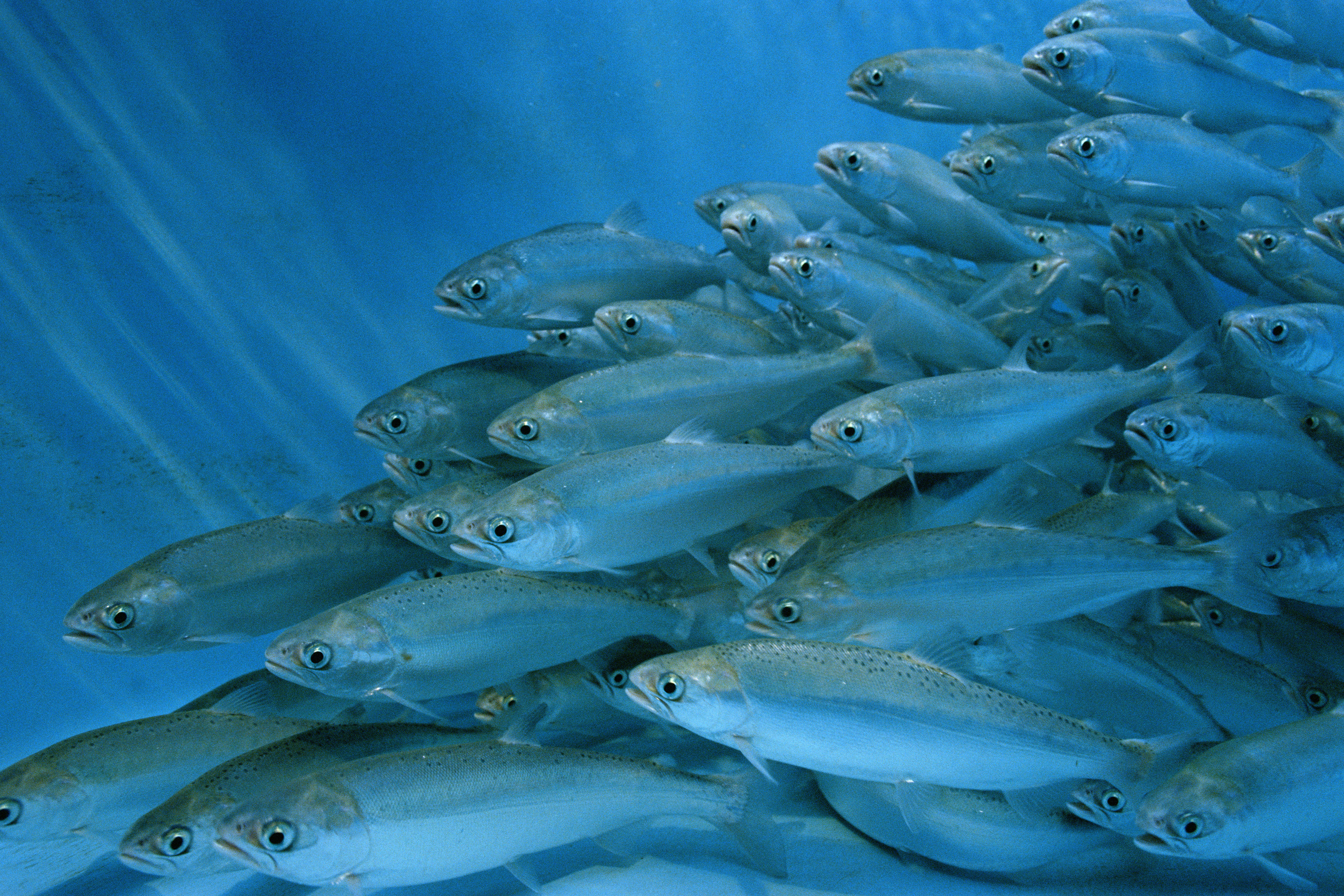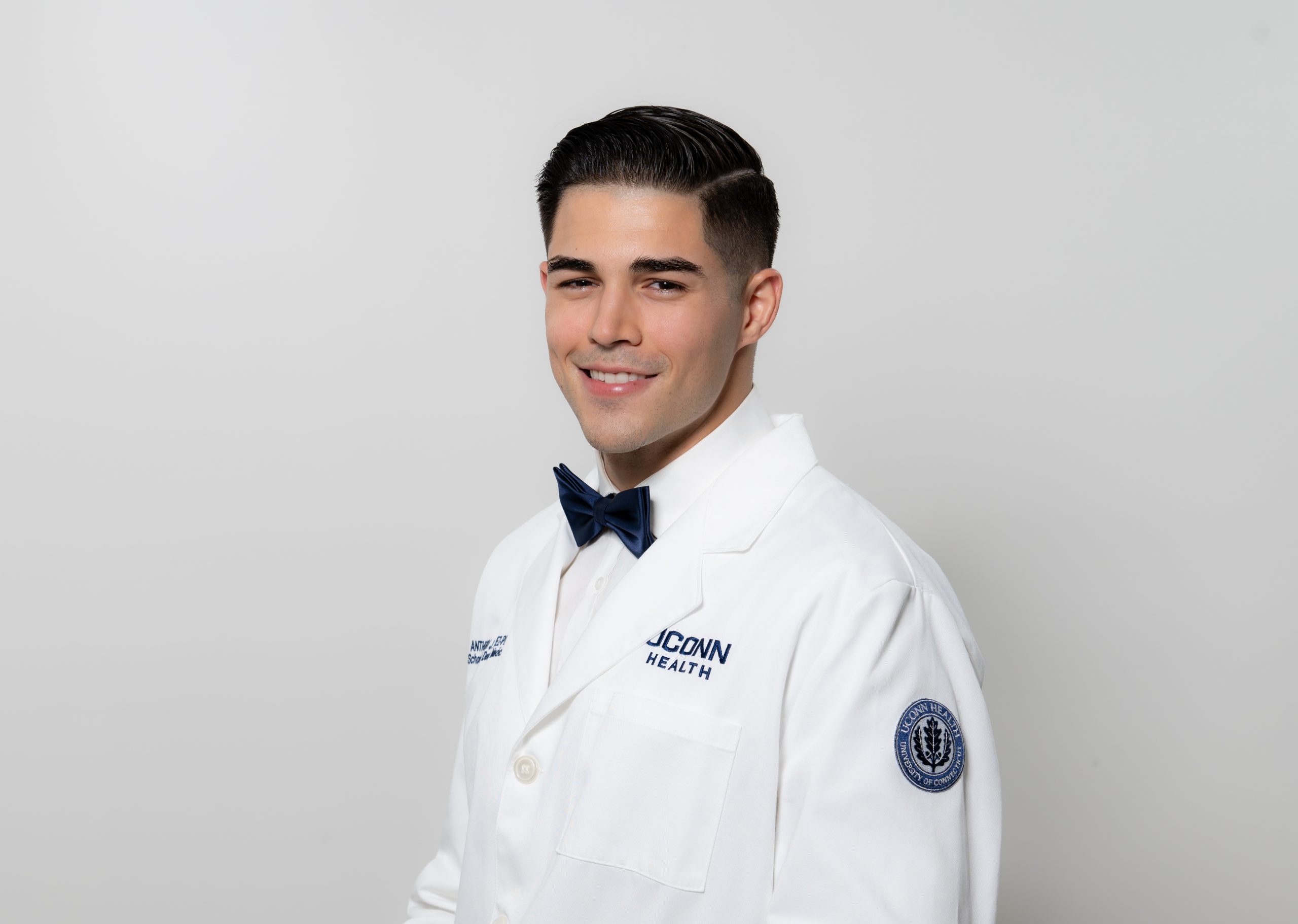Two potent antibacterials found in fish do their dirty work in unexpected ways, report UConn chemists and colleagues in a paper accepted by the FEBS Journal. The research could point the way to entirely new classes of antibiotics.
Fish suffer from bacterial infections just like humans do. It’s an especially tough problem for farmed fish, which live in close quarters where sickness can spread quickly. Fish farmers know that adding copper sulfate to the water reduces bacterial disease, but they haven’t understood why. Now, a team led by chemists from UConn has discovered that fish make antibacterial peptides that bind to copper and use it as a weapon to slay bacteria.
Peptides are small molecules, made from the same stuff as proteins but much shorter. Biologists knew that these fish peptides, called piscidin-1 and piscidin-3, were antibacterial. But it took a chemist to figure out the copper connection.
“We were interested in these peptides because they are found in several different species of fish,” including tilapia and striped bass, says UConn chemist Alfredo Angeles-Boza. “And we noticed the peptides have a copper-binding motif,” meaning a chemical pattern known to grab onto copper in other biological systems.
So the team tested the peptides’ dependence on copper: first they added the peptides to colonies of E. coli bacteria grown in the lab. The bacteria died within hours. Then they grew colonies of E. coli in a special, copper-limited environment. When they added the peptides to the copper-depleted bacteria, the peptides weren’t nearly as effective at killing. This was clear proof that copper was necessary for the peptides to work.
Once they had proven the peptides were using copper, they tested each peptide separately to see its mode of action. Although the two peptides looked similar chemically, and in both cases they used copper, they had totally different modes of attack. Piscidin-1 slashed through the bacteria’s outer cell membrane, while piscidin-3 scrambled the bacteria’s DNA.
Angeles-Boza says he and collaborator Myriam Cotten from the College of William and Mary were surprised: “The two peptides are very similar in structure but behave in very different ways. It is advantageous for fish, because the two peptides target different microbes. Nature made a minute change, but it makes a big difference.”
In addition to killing bacteria outright, piscidin-3 has a unique ability to target forms of bacteria impervious to traditional antibiotics. For example, certain types of bacteria make “persister cells” that shut down and hibernate when conditions get hostile. This protects it from most traditional antibiotics, which rely on disrupting a bacterial cell’s metabolic machinery. But piscidin-3 can infiltrate the cell and destroy its DNA, even as the cell hibernates. Piscidin-3 can also slice through biofilms, sticky nets of bacteria that tend to form on catheters, medical implants, the lungs of cystic fibrosis sufferers, and in chronic ear infections, to name just a few common examples.
The researchers are now searching for more examples of antibacterial peptides. So far, Angeles-Boza has found more than 65 different peptides that bind to copper, in humans and other mammals as well as in fish. The more examples they find, the more clues pharmaceutical chemists will have to design new antibiotics along the same motif.
The research team included M. Daben Libardo ’17 Ph.D., a former graduate student at UConn, now a postdoctoral fellow at NIH.



